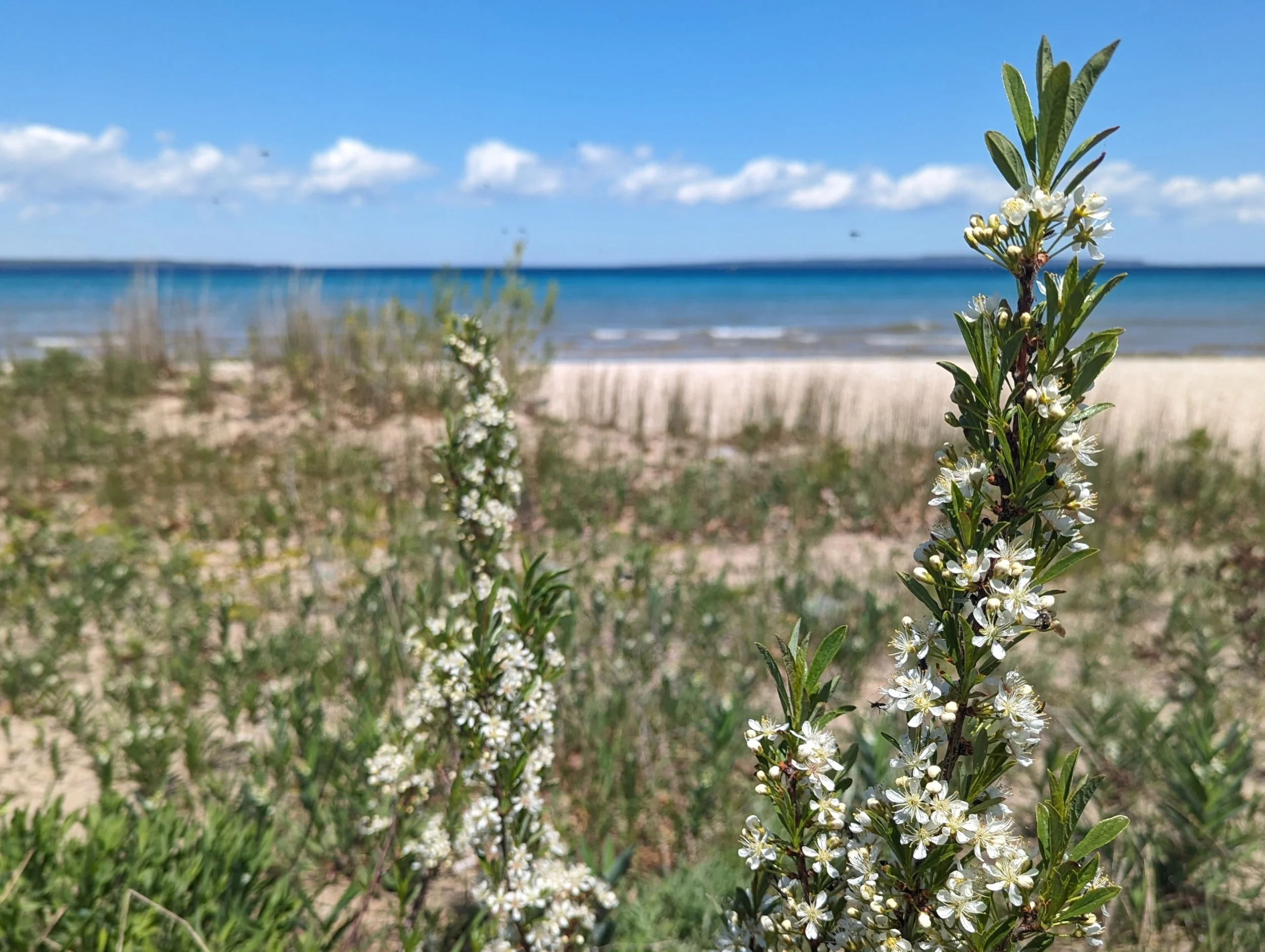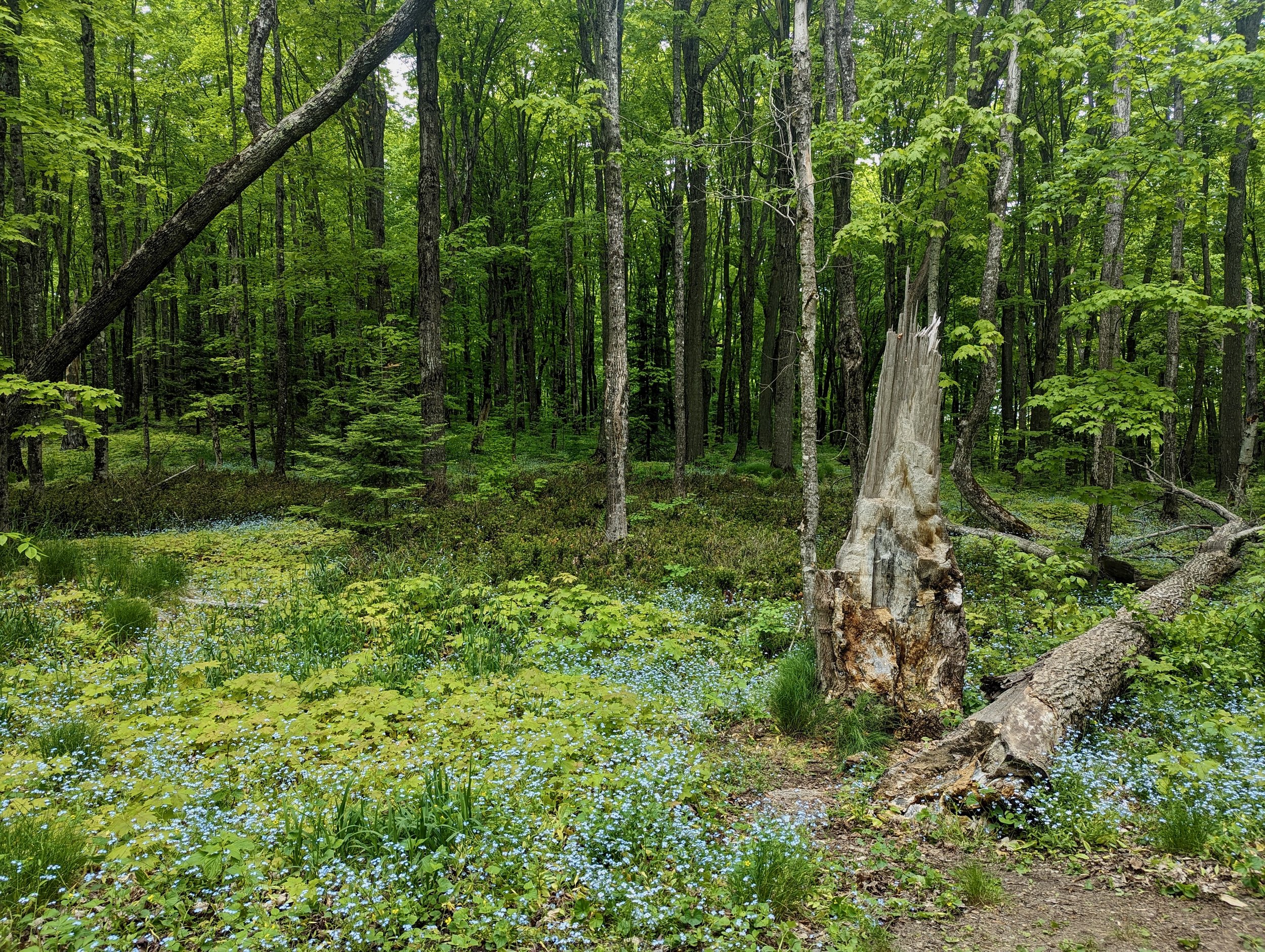Vacationing with a Plant Nerd
By Julie Dennewitz, CGC Horticulturist
Plant nerds vacation a little differently than “normal people.” Instead of the License Plate Game, we play Name That Invasive as we roll down the highway. Our camera reels are feature more weird-looking leaves than landmarks. And walking anywhere with us is like taking a private interpretive tour. But our incessant love of learning about and connecting with the natural world also means that we can find excitement and wonder anywhere we travel.
This plant nerd had the pleasure of spending her long weekend on the remote shores of Whitefish Bay, in Michigan’s Upper Peninsula. Lake Superior’s icy blue water stretches out as endlessly as the sky; its rocky coastline is peppered with historic lighthouses and catch-of-the-day diners. It’s a place that was once crucial for mining, logging, fishing and the shipping of raw materials east to urban factories. Now it’s a quaint, quiet place, half abandoned and sparsely visited even on a holiday weekend. But with my toes buried in the soft cool sand and the dazzling lakeside sunshine warming my face, I was thinking about work.
More specifically, I was thinking about our newly planted Food Forest and how many of Michigan’s incredible native plants would fit right in. It seemed like every plant I encountered had some culinary or medicinal benefit to offer. From the sweet mentholated red berries of wintergreen, the prolific low-bush blueberries, the understory of downy serviceberry and red elderberry, the open dunes colonized by sand cherry and wild strawberry, up to the canopy of sugar maple, white spruce, and pine. I had never seen such a bounty! It’s easy to understand why tribes like the Ojibwe and the Chippewa would choose to endure brutal winters, dangerous coastal storms, biting black flies and swarms of massive mosquitos to build societies here. The shores of Lake Superior are brimming with gifts, offered so casually even in campgrounds and at roadside rest stops.
But this northern Eden, like all ecosystems, faces challenges. To knowing eyes, Michigan’s pristine wilderness is under attack. Invasive Norway maple and forget-me-nots clogging the forest, invasive scale insects decimating beech groves, invasive sea lamprey preying on native lake fish. It seems no place on Earth is safe from the threat of destructive invasives species, introduced through careless human activities such as moving firewood, planting non-native ornamentals, and connecting previously protected habitats through canals and shipping lanes.
In addition to invasive species, wildfires, climate change, pollution, and over-development threaten these ancient and sacred lands. I’m grateful for the people and organizations invested in protecting the Upper Peninsula. People like Denise, who works at the Pendills Creek National Fish Hatchery, raising lake trout to help repopulate Superior with this keystone species. This federally funded reintroduction follows a massive and successful effort to reduce the sea lamprey population by 90%. Denise and her fellow Fish and Wildlife employees remind us that things are never too far gone.
All of this I learned and then regurgitated to my husband instead of what one might call “relaxing” on my vacation. But this is the life of a plant nerd. It’s the same story everywhere you go. Our country’s wild spaces are sites of struggle and loss and rehabilitation. Their histories weave together wildlife, indigenous people, immigrants, industry, and conservation. And their futures are in the hands of communities with diverse and often opposing interests. I believe places like the north woods of Lake Superior have more to offer us than we can fully understand, and that protecting them is essential. I want to know that a bounty of wild berries, fresh-caught fish, and clean coastal air will be there whenever I need it, just a long drive up I-75 away.










